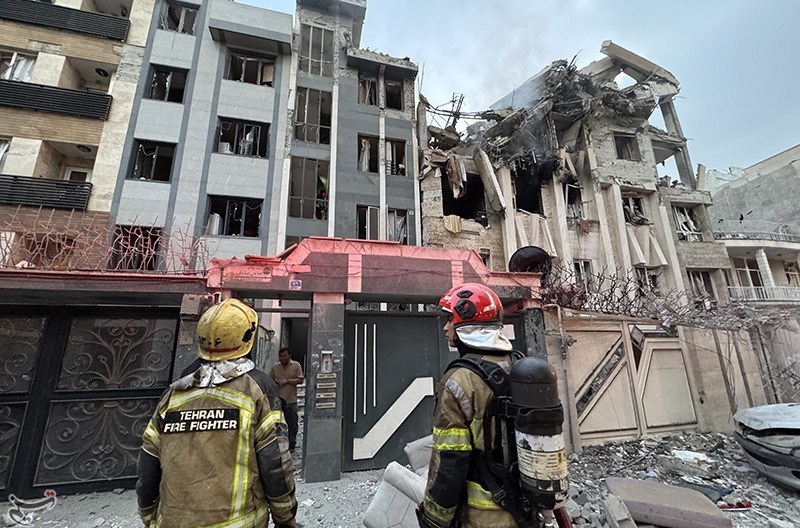
(Scypre.com) – Iran launched a major retaliatory strike on Israel late on June 22, 2025, just hours after U.S. airstrikes targeted several of its key nuclear facilities. The missile and drone assault—aimed at cities including Haifa and Tel Aviv—marked a sharp escalation in tensions across the Middle East. While Israel’s Iron Dome defense system intercepted many projectiles, some missiles penetrated, causing casualties and significant damage. The attack was widely seen as Iran’s direct response to the previous day’s coordinated U.S. strikes on the nuclear facilities at Fordow, Natanz, and Isfahan, which American officials described as a “preemptive disruption” of Iran’s nuclear ambitions.
The U.S. strikes, executed using B-2 stealth bombers and Tomahawk missiles launched from Navy vessels, reportedly inflicted substantial damage on Iran’s underground enrichment infrastructure. Initial reports from Tehran claimed hundreds of casualties, though those numbers remain unverified by international observers. The strikes came after intelligence assessments warned of Iran’s accelerated nuclear enrichment and its alleged support for proxy militant actions against U.S. and Israeli interests in the region. The Pentagon stated that the action was “limited but decisive,” and aimed at delaying Iran’s nuclear progress without provoking a full-scale war.
In response to the escalating conflict, former President Donald Trump made a rare public appeal for diplomacy, calling on Iran to cease further aggression and “come to the negotiating table.” In a series of social media posts, Trump lauded the precision of the U.S. strikes while declaring that it was time for peace. One post, which quickly went viral, featured the phrase “MAKE IRAN GREAT AGAIN,” echoing his 2016 campaign slogan and sparking debate across political lines. His messaging appeared designed to contrast his foreign policy approach with that of the current administration, while urging de-escalation despite the ongoing violence.
The international reaction to the hostilities has been swift and divided. China and Russia condemned the U.S. strikes at the United Nations, calling them a violation of international norms and warning of “grave consequences.” The International Atomic Energy Agency (IAEA) voiced serious concern over the risk of radioactive contamination and the destabilization of non-proliferation efforts. NATO allies have offered mixed responses; while Australia and Poland expressed support for the U.S., several European leaders, including France and Germany, urged immediate diplomatic intervention to prevent a regional war. Meanwhile, Iran’s parliament introduced emergency measures to possibly shut down the Strait of Hormuz, triggering a spike in global oil prices and further economic uncertainty.
On the ground, both sides are reporting civilian suffering. Israeli hospitals have been overwhelmed with injuries from missile shrapnel and building collapses. In Iran, panic has spread among the population, particularly in Tehran, where residents fled to the outskirts amid fears of further bombings. Humanitarian agencies have called for aid corridors and ceasefire talks as concerns grow over displaced families and medical shortages. In one widely reported incident, a hospital in Beersheba narrowly avoided catastrophe after a missile strike ruptured a chemical line, forcing emergency evacuations.
Military analysts warn that the region is dangerously close to the brink of a broader conflict. The potential for asymmetric retaliation by Iran—through cyberattacks or via militant groups such as Hezbollah—remains high. Experts also caution that the attack on nuclear infrastructure may backfire, pushing Tehran to abandon restraint and pursue weaponization more openly. In Washington, some lawmakers support further strikes if provoked, while others call for congressional oversight and a return to diplomacy. Economically, the situation has already impacted oil markets, with analysts predicting volatility as long as the Strait of Hormuz remains threatened.
As the conflict evolves, the world watches anxiously. Whether the next move comes from Tehran, Tel Aviv, or Washington remains uncertain. Trump’s call for peace stands in stark contrast to the growing drumbeat of war, but so far, no side has shown willingness to back down. With regional alliances shifting and public fear mounting, global leaders are racing to prevent a crisis that could spiral into full-scale war.